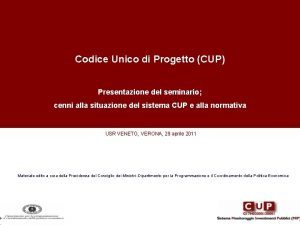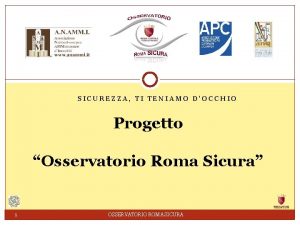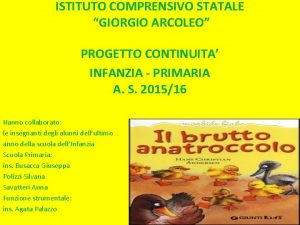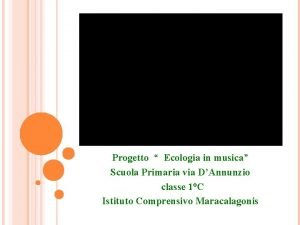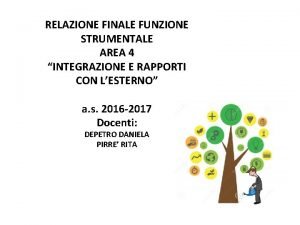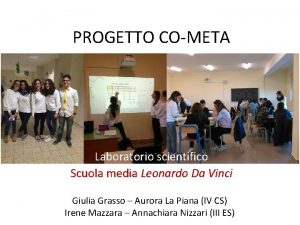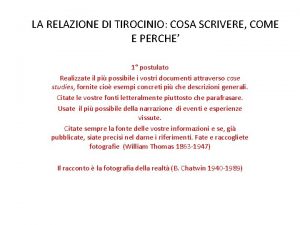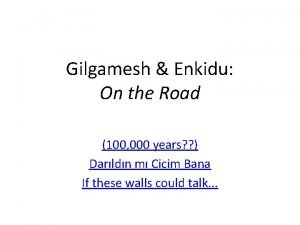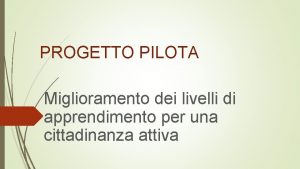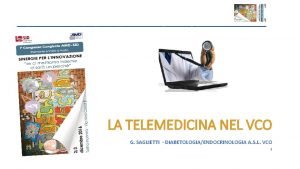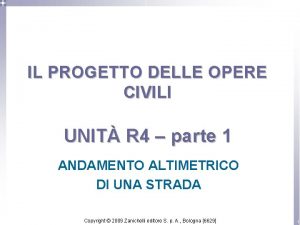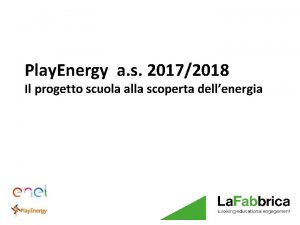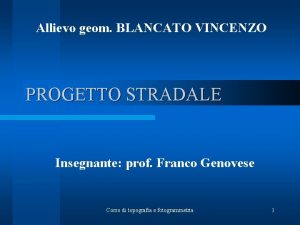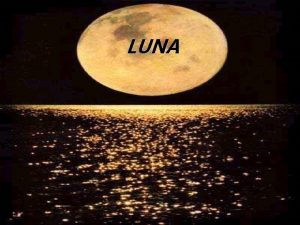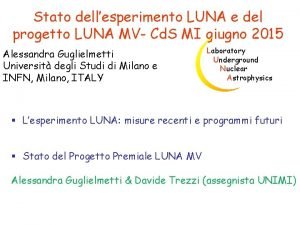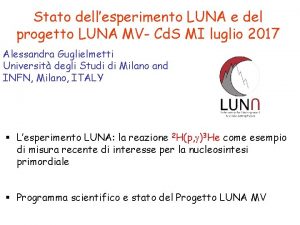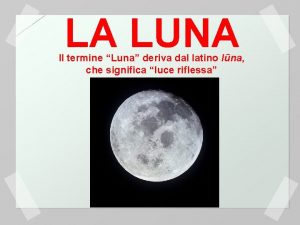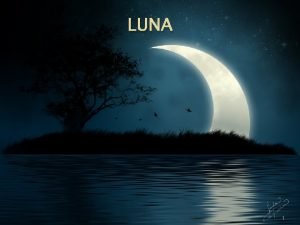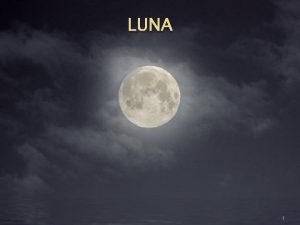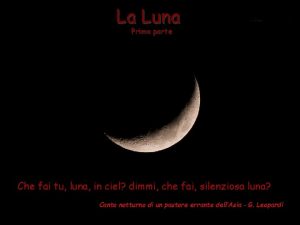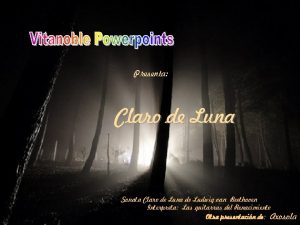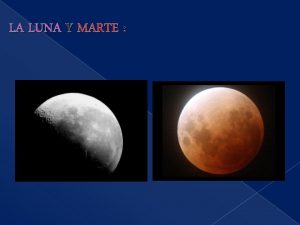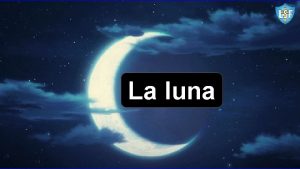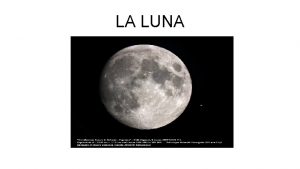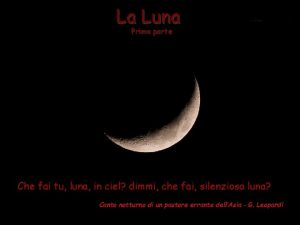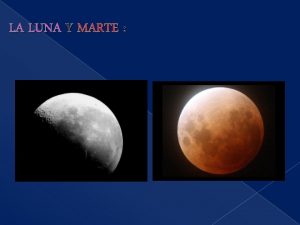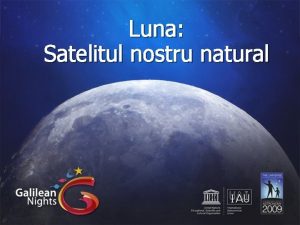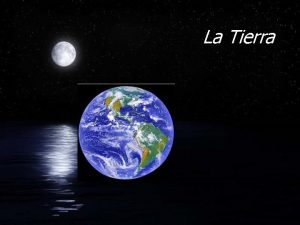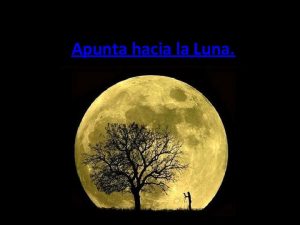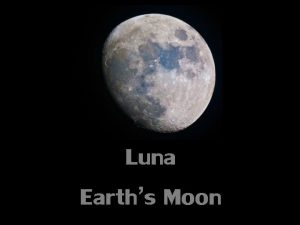Lesperimento LUNA ed il progetto LUNA MV ai






























- Slides: 30

L’esperimento LUNA ed il progetto LUNA MV ai Laboratori Nazionali del Gran Sasso Alessandra Guglielmetti Università degli Studi di Milano e INFN Laboratory Underground Nuclear Astrophysics - Misure di interesse per la BBN: il problema del 6 Li - Misure di interesse per le stelle AGB: 18 O(p, )15 N 17 O(p, )14 N - Il futuro all’acceleratore LUNA 400 k. V - Il progetto LUNA MV e

Big Bang nucleosynthesis Production of the lightest elements (D, 3 He, 4 He, 7 Li, 6 Li) in the first minutes after the Big Bang The general concordance between predicted (BBN theory) and observed (stellar spectra) abundances gives a direct probe of the Universal baryon density CMB anisotropy measurements (WMAP/Plank satellites) give an independent measurement of the Universal baryon density The agreement of the two results has to be understood in terms of uncertainties in the BBN predictions

BBN reaction network 1. 2. 3. 4. 5. 6. p + e- + p+n D+ D + p 3 He + D + D 3 He + n D + D 3 H + p 3 H + D 4 He + n n 7 12 10 6 13 3 3 He Be 9 4 8 4 He 7 Li 11 7 6 7. p 2 D 5 3 H 8. 9. 10. 1 2 11. 12. n Li 13. + 4 H 7 Li + 3 He + n 3 H + p 3 He + D 4 He + p 3 He + 4 He 7 Be + 7 Li + p 4 He + 4 He 7 Be + n 7 Li + p 4 He + D 6 Li + 3 H Apart from 4 He, uncertainties are dominated by systematic errors in the nuclear cross sections

The two Lithium problems 1) The BBN 7 Li predictions are a factor 2 -4 higher than observations: a nuclear physics solution is highly improbable (e. g 3 He(4 He, )7 Be measurement at LUNA) 2) The amount of 6 Li predicted by the BBN is about 3 oom lower than the observed one in metal poor stars (debated but still «true» for a few metal poor stars) BBN predicts 6 Li/7 Li= 2 * 10 -5 much below the detected levels of about 6 Li/7 Li= 5 * 10 -2 Necessary to constrain nuclear physics input: 2 H( , )6 Li

2 H( , )6 Li: available data Upper limits (indirect meas) No data in the BBN energy range!

2 H( , )6 Li at LUNA: Experimental setup Strong beam induced background due to: 1) Rutherford scattering of 4 He beam on 2 H target 2) 2 H(d, n)3 He reaction 3) Inelastic neutron scattering on different materials (Cu, Pb, Ge, …) background in the 2 H( , )6 Li Ro. I The beam induced background weakly depends on the beam energy

About the experimental setup


2 H( , )6 Li at LUNA: gamma spectra An irradiation at one given beam energy can be used as a background monitor for an irradiation at a different beam energy, if the two ROIs do not overlap Natural background subtracted 400 ke. V data (grey filled) 280 ke. V data (red empty) rescaled to take into account the weak energy dependence of the beam induced background

2 H( , )6 Li at LUNA: results M. Anders et al. , Phys. Rev. Lett. 113 (2014) 042501 New LUNA data From the new data on the 2 H( , )6 Li reaction: 6 Li/7 Li = (1. 5 ± 0. 3) * 10 -5 Standard BBN production as a possible explanation for the reported 6 Li detections is ruled out. “Non standard” physics solutions?

17 O(p, )14 N and 18 O(p, )15 N reactions • In AGB stars ( T=0. 03 -0. 1 GK ) CNO cycle takes place in H burning shell • Measured 17 O/16 O and 18 O/16 O abundances in pre-solar grain give information on AGB surface composition • Information on mixing processes if cross sections are well known

17 O(p, )14 N and 18 O(p, )15 N 17 O(p, )14 N Q = 1. 2 Me. V Two narrow resonances at 70 and 193 ke. V Main goal at LUNA: 70 ke. V resonance reactions Q = 4 Me. V Two narrow resonances at 95 and 152 ke. V Main goals at LUNA: • rescan excitation function • 95 ke. V resonance (strength and energy) • Measure below 70 ke. V

17 O(p, )14 N and 18 O(p, )15 N experimental setup SILICON DETECTOR proton beam from LUNA 400 k. V enriched targets 17 O or 18 O 8 silicon detectors SOLID TARGET POSITION foils of Al Mylar to stop backscattered protons low alpha particle energy (200250 ke. V for 17 O(p, )14 N reaction)

The 17 O(p, )14 N reaction: 70 ke. V resonance 10 On-resonance (71 ke. V) Natural background Off-resonance (65 ke. V) Region of interest 9 Arbitrary units 8 7 6 5 4 3 2 1 0 0 100 200 300 400 500 Energy [ke. V] 600 700 800 Evidence of a counting excess in the region of interest!

The 17 O(p, )14 N Blackmon 95 Resonance strength (ne. V) 14 12 10 8 6 reaction: 70 ke. V res Sergi 10 LUNA 14 PR EL IM IN AR Y 4 2 0 • Very preliminary analysis favours a larger strength value compared with literature • If confirmed, it would have an astrophysical impact • Analysis is still ongoing

The 18 O(p, )15 N reaction Data taking completed. Data analysis on going 152 ke. V resonance PRELIMINARY 334 ke. V resonance 216 ke. V resonance In agreement with previous data Might improve precision on resonance energy and strength 95 ke. V resonance strength: precision about 10% (20 -30% literature) energy determined with 0. 5 ke. V precision (2. 2 ke. V literature) 60 ke. V measured with about 20% statistical uncertainty

(p, 25 Mg 22 Na (p, 26 Al (p (p, 24 Mg (p, e+ 6 s e+ 7 s (p, 23 Na , 27 Si 26 Mg 25 Al 22 Ne (p, 20 Ne e+ 3 yr 21 Na (p, e+ 19 F 21 Ne 22 s Ne. Na Cycle Now “on beam”: the 23 Na(p, )24 Mg and 18 O(p, )19 F reactions - AGB nucleosynthesis (p, 4 s + e 27 Al Mg. Al Cycle 23 Na(p, ) 19 F 24 Goal of of 18 O(p, ) measurement: Mg measurement: 95 ke. V 144 resonance ke. V resonance and DC component. BGO detector first, HPGe if feasible BGO detector first. HPGe if feasible

LUNA 400 k. V new program 2016 -2019: a bridge toward LUNA MV 13 C( , n)16 O – neutron source for the s-process (formation of heavy elements) 12 C(p, )13 N and 13 C(p, )14 N – relative abundance of 12 C-13 C in the deepest layers of H-rich envelopes of any star 2 H(p, )3 He – 2 H production in BBN 22 Ne( , )26 Mg – competes with 22 Ne( , n)25 Mg neutron source for the s-process (formation of heavy elements) 6 Li(p, )7 Be – improves the knowledge of 3 He( , )7 Be key reaction of p-p chain

LUNA MV- scientific program 13 C( , n)16 O and 22 Ne( , n)25 Mg : neutron sources for the s-process (formation of heavy elements) 12 C( , )16 O: key reaction of Helium burning: determine C/O ratio and stellar evolution 12 C+12 C: energy production and nucleosynthesis in Carbon burning. Global chemical evolution of the Universe Reactions occuring at higher temperature than those belonging to Hydrogen burning or BBN Higher energy machine needed!

12 C( , )16 O – Holy Grail of Nuclear Astrophysics Stellar Helium burning in Red Giant Stars the He burning is ignited on the 4 He and 14 N ashes of the preceding hydrogen burning phase (pp and CNO) relevant questions: Energy production and time scale of Consequences Helium burning: § late stellar evolution 4 He(2 , ) 12 C( , ) 16 O( , )20 Ne § composition of C/O White dwarfs § Supernova type I explosion Neutron sources for. II s process: § Supernova type nucleosynthesis 14 N( , )18 F( + )18 O( , )22 Ne( , n) 22 Ne( , ) Oxygen-16

Element abundances in the solar system Big Bang 1 E+11 Abundance relative to 106 Si Nuclear Astrophysics ambitious task is to explain the origin and relative abundance of the elements in the Universe 1 H 1 E+10 4 1 E+09 H-burning & He-burning He 1 E+08 a - elements Type II SN 12 16 O C 1 E+07 20 Ne 1 E+06 56 Fe 40 Ca 1 E+05 Fe- peak Type I SN 1 E+04 N=82 r -process peak Type II SN 1 E+03 19 F 1 E+02 1 E+01 118 Sn N=82 s- process peak AGB stars N=126 r -process peak Type II SN N=126 s- process peak AGB stars 138 Ba 1 E+00 208 195 Pt 1 E-01 Pb 232 Th 238 U 1 E-02 1 E-03 0 50 n source reactions 100 Mass Number 150 200 250

13 C( , n)16 O experimental status of the art Heil 2008 Big uncertainties in the R-matrix extrapolations. Presence of subthreshold resonances. A low background environment is mandatory for any new study Neutron energy 2. 5 -3 Me. V (in the energy range foreseen)

22 Ne( , n)16 O experimental status of the art Jaeger 2001 Precise measurement of the known resonances down to the one at E = 831 ke. V to be performed at first, followed by a detailed search for unknown resonances down to E ~ 600 ke. V. Neutron energy 50 -450 ke. V (in the energy range foreseen)

LUNA MV project Accelerator: Intense H+, 4 He+, 12 C+ e 12 C++ beams in the energy range: 350 ke. V-3. 5 Me. V. One beam line with all necessary elements (magnets, pumps, valves, . . . ). Total budget about 3. 9 Meuro: from LUNA MV «Premium projects» (total 5. 3 Meuro) of the Italian Research Ministry Tender published last April on European official gazette. Two factories have produced an offer now under evaluation Tender assignment: 50% tecnical performances (beam intensity, beam quality, maintenance, additional components, …) , 50% price Timeline: Contract signed by 12/2015. Accelerator built and tested by the producing company by 11/2017. Accelerator delivered to LNGS by 01/2018 Accelerator installed and tested at LNGS by 07/2018. Then first experiments

LUNA MV project LUNA MV accelerator will be installed in the south part of Hall C of LNGS laboratory (OPERA location) Provisionary dimensions of the hall: 27 x 11 x 5 m 3 OPERA decommissioning started in Jan 2015. Should be finished by October 2016


LUNA MV project Building & shielding: Reactions to be studied at LUNA MV will produce a small amount of neutrons…in a very low background laboratory… GEANT 4 simulations with different materials are under development in order to find out the best compromise among performance as neutron shield, price, easiness of decommissioning, thickness (maximize internal space, … ) New materials for n shielding (LWPC, B 4 C concrete)? Possibility of multi layer configurations. Timeline: Engineering of shielding & building concluded by 06/2016

LUNA MV project-commissioning measurement 14 N(p, )15 O Use of neutrino flux as a probe of solar interior composition (metallicity) CNO neutrino play a key role: Borexino can detect them Necessary to better constrain nuclear physics inputs i. e. 14 N(p, )15 O

LUNA MV project-commissioning measurement 14 N(p, )15 O Already measured at LUNA 400 k. V down to 70 ke. V (110 ke. V with angular distribution). Target production known. R matrix extrapolation to Gamow peak energies affected by high uncertainties at higher energies (g. s. transition in figure) Measure in the range 200 ke. V - 1. 5 Me. V with both accelerators and same experimental setup to minimize systematic effects Study angular distribution with HPGe detectors in far geometry. Reduce the nuclear physics uncertainty from 7% to 5% and measure CNO neutrinos (15 O) with 10% uncertainty allow to determine solar metallicity with 17% accuracy (now >30%)

The LUNA collaboration • A. Best, A. Boeltzig*, G. F. Ciani*, A. Formicola, S. Gazzana, I. Kochanek, M. Junker, L. Leonzi | INFN LNGS /*GSSI, Italy • D. Bemmerer, M. Takacs, T. Szucs | HZDR Dresden, Germany • C. Broggini, A. Caciolli, R. Depalo, R. Menegazzo, D. Piatti | Università di Padova and INFN Padova, Italy • C. Gustavino | INFN Roma 1, Italy • Z. Elekes, Zs. Fülöp, Gy. Gyurky| MTA-ATOMKI Debrecen, Hungary • O. Straniero | INAF Osservatorio Astronomico di Collurania, Teramo, Italy • F. Cavanna, P. Corvisiero, F. Ferraro, P. Prati, S. Zavatarelli | Università di Genova and INFN Genova, Italy • A. Guglielmetti, D. Trezzi | Università di Milano and INFN Milano, Italy • A. Di Leva, G. Imbriani, | Università di Napoli and INFN Napoli, Italy • G. Gervino | Università di Torino and INFN Torino, Italy • M. Aliotta, C. Bruno, T. Davinson | University of Edinburgh, United Kingdom • G. D’Erasmo, E. M. Fiore, V. Mossa, F. Pantaleo, V. Paticchio, R. Perrino, L. Schiavulli, A. Valentini| Università di Bari and INFN Bari, Italy
 Esempio progetto messa alla prova
Esempio progetto messa alla prova Cup cipecomitato
Cup cipecomitato Progetto roma sicura
Progetto roma sicura Il brutto anatroccolo fiaba in sequenze
Il brutto anatroccolo fiaba in sequenze Punti di forza e debolezza di un alunno
Punti di forza e debolezza di un alunno La moda italiana progetto
La moda italiana progetto Relazione finale docente esempio
Relazione finale docente esempio Progetto laboratorio scientifico scuola media
Progetto laboratorio scientifico scuola media Progetto donna mammografia
Progetto donna mammografia Progetto alternativo alla religione cattolica
Progetto alternativo alla religione cattolica Progetto didattico sulla bellezza
Progetto didattico sulla bellezza Come scrivere una relazione di tirocinio esempio
Come scrivere una relazione di tirocinio esempio Rap sulla costituzione
Rap sulla costituzione Casa verde
Casa verde Progetto gilgamesh
Progetto gilgamesh Progetto prin esempio
Progetto prin esempio Relazione referente cyberbullismo
Relazione referente cyberbullismo Cartina del viaggio di ulisse
Cartina del viaggio di ulisse Cinzia parolini
Cinzia parolini Progetto pilota esempio
Progetto pilota esempio Asl vco progetto diabete
Asl vco progetto diabete Livelletta di compenso
Livelletta di compenso Progetto educativo esempio
Progetto educativo esempio Progetto un mondo a colori
Progetto un mondo a colori Progetto la città che vorrei
Progetto la città che vorrei Progetto clil
Progetto clil Accoglienza il viaggio
Accoglienza il viaggio Progetto educativo di gruppo
Progetto educativo di gruppo Pei progetto di vita
Pei progetto di vita Progetto stradale topografia
Progetto stradale topografia Progetto educativo esempio
Progetto educativo esempio

